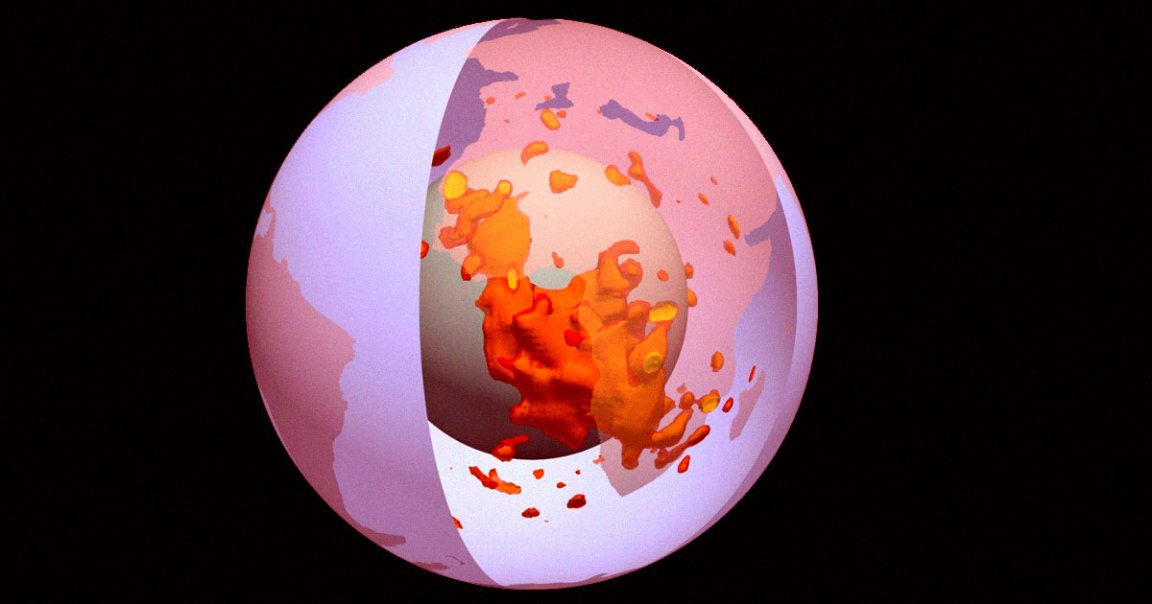
Lumps in the Night
Researchers are increasingly suspicious that a powerful collision between the Earth and a Mars-sized object dubbed Theia some 4.5 billion years ago may have left “mysterious blobs” buried deep within Earth’s interior — an impact so violent that it ejected enough material to allow the Moon to form.
Now, as the Washington Post reports, scientists are also coming to suspect that these buried blogs may have led to the development of plate tectonics as well, the geological processes that were integral to the formation of life on Earth and still trigger earthquakes and volcanoes to this day.
As detailed in a new paper published in the journal Geophysical Research Letters, researchers drew a line between the mysterious blobs that were left behind from the collision and modern plate tectonics, which eventually formed the conditions that allowed life to flourish billions of years later.
“The giant impact is not only the reason for our Moon, if that’s the case, it also set the initial conditions of our Earth,” coauthor and California Institute of Technology geoscientist Qian Yuan told WaPo.
Superunknown
The team examined existing theories surrounding these blobs buried in our planet’s mantle, which are made of different materials than their surroundings, and how they first came to be.
The researchers believe that roughly 200 million years following the impact, these blobs kickstarted “strong mantle plumes” that initiated a process called subduction, with slabs of the Earth’s crust sinking below other slabs.
The paper could also help explain the oldest minerals ever discovered on Earth, which scientists believe to have been the result of subduction over four billion years ago.
“The models link the earliest subduction to the [Moon-forming giant impact] with implications for understanding the diverse tectonic regimes of rocky planets,” the researchers wrote in their paper.
But not every scientist is convinced. And others questioned whether we could ever figure out what was going on over billions of years in the first place.
“We need to bear in mind there is insufficient evidence for us to ever really know what the tectonic mode was in the Archaean,” University of Maryland geoscientist Michael Brown, who was not involved in the study, told WaPo, referring to the Earth’s second of four geologic eons that lasted from four to 2.5 billion years ago.
“So from a philosophical standpoint, it’s almost certainly unknown and unknowable,” he added. “I think that point sometimes gets lost.”
More on tectonics: Scientists Puzzled by Sudden, Super-Loud Rumble Inside Mars